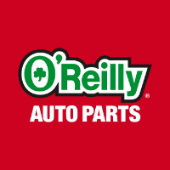-
Welcome to Auto Parts Forum
Whether you are a veteran automotive parts guru or just someone looking for some quick auto parts advice, register today and start a new topic in our forum. Registration is free and you can even sign up with social network platforms such as Facebook, X, and LinkedIn.
How Long Does an Alternator Last?
-
Similar Topics
-
By CALEPH Auto Parts
The car air filter (commonly known as air filter or air filter) plays a very important role in the car engine system. Here are the main functions of the car air filter:
1. Filter impurities:
It is able to capture dust, sand, pollen and other particulate matter in the air and prevent these impurities from entering the engine.
2. Protect engine components:
By filtering out these impurities, the air filter helps protect the components inside the engine, such as cylinders, pistons and valves, from wear and damage.
3. Maintain engine performance:
Clean air is essential for the efficient combustion of the engine. A good air filter ensures that the engine gets the right amount of clean air, which helps improve fuel efficiency and power output.
4. Extend engine life:
By reducing debris that can cause friction and damage, the air filter helps extend the life of the engine.
5. Improve fuel efficiency:
When the engine is able to work with clean air, it can burn fuel more efficiently, which can lead to better fuel economy.
6. Reduce Emissions:
A clean air filter can also help reduce harmful emissions, ensuring that the engine runs at its best and doesn't burn fuel in an incomplete or dirty manner.
7. Prevent Engine Knock:
Impurities can cause engine knocking or knocking noises, which are signs of inefficient combustion. A good air filter can help prevent this.
Regularly checking and replacing air filters is part of your car's regular maintenance to ensure these benefits are maintained.
🔗The air filter products here are suitable for you: link hidden, please login to view
💬Leave a message to tell us your needs, our professional team is always at your service!
-
By NAPA
Chase Elliott and the No. 9 link hidden, please login to view team qualified ninth for Sunday’s NASCAR Cup Series race at Talladega Superspeedway. Elliott led laps en route to a second-place result in stage one and followed that up with an eighth-place finish in stage two. After making multiple moves to try to advance to the front of the field towards the end race, he avoided a last-lap multi-car incident to finish 15th. The 28-year-old driver now sits third in the Cup Series point standings, just 22 markers behind the leader. Chase Elliott advanced to the final round of Saturday’s qualifying session, ultimately claiming a ninth-place starting position for Sunday’s NASCAR Cup series race at Talladega Superspeedway. Early in the race, Elliott opted to drop back in the field in an effort to conserve fuel. He maneuvered his way forward utilizing the outside lane as the field went three wide. Eventually, the driver of the No. 9 NAPA Auto Parts Chevrolet Camaro ZL1 found the front of the pack and took over the lead for the first time of the race on lap 42. Just two laps later, Elliott made his way to pit road for a fuel-only stop. Once green-flag stops cycled through, the 28-year-old driver retook the lead. He raced side-by-side with the No. 2 for the top spot as the field ran double file. Elliott came up just short of the stage win, taking the green-and-white checkered flag in second at the conclusion of lap 60.
Under the stage-ending caution, Elliott relayed that he thought he wore out the right front tire. After the team made a pit stop for four tires and fuel, crew chief Alan Gustafson examined the tires and relayed to Elliott that the right front looked fine. The 2020 Cup Series champion was the second one off of pit road but opted to line up on the outside of row two to start the second stage. The majority of the field went back to three-wide racing and Elliott utilized all the lanes throughout the stage to find momentum. On lap 103, he brought the NAPA Auto Parts Chevrolet to the attention of his crew for fuel. In the closing laps of stage two, Elliott was running among the front half of his competitors and scored an eighth-place result at its lap-120 conclusion.
After pitting for four tires and fuel during the stage break, the team opted to pit again to top off the fuel tank of the NAPA Auto Parts Chevy. Elliott took the green flag for the final stage deep in the field and was running just outside of the top 20 when the yellow flag waved for a multi-car incident. After pitting for fuel only, Elliott restarted inside the top 15 and continued to run among the top 20 in the running order. After another caution came out on lap, the No. 9 NAPA team took the opportunity to pit for the final time for fuel. Elliott was the 16th to choose his lane for the lap-161 restart and opted for the inside. As the laps wound down, Elliott joined a third lane of cars on the outside. After initially making progress, the lane stalled out and he lost his momentum. On the final lap of the race, the leaders triggered a multi-car incident and Elliott avoided the melee to earn a 15th-place finish.
A solid points day for Elliott moved him up to third in the Cup Series driver standings. He’ll head to Dover Motor Speedway next week just 22 markers behind the leader.
Start / Finish: 9 / 15
Points Standing / Total: 3rd / 337 (-22)
Next Race: Sunday, April 28, Dover Motor Speedway
How to Watch or Listen: 2:00 p.m. ET on FS1, PRN or SiriusXM
NAPA:
link hidden, please login to view
Chase Elliott: link hidden, please login to view
Hendrick Motorsports: link hidden, please login to view
No. 9 Team: link hidden, please login to view The post
link hidden, please login to view appeared first on link hidden, please login to view.
link hidden, please login to view 
-
By Counterman
On modern vehicles, overheating is a rare occurrence thanks to high-quality hoses, thermostats and better engine management. Unfortunately, the weak point is still the coolant. Whether it’s a 100,000-mile or 150,000-mile coolant, eventually it will break down and lose the ability to protect the components with which it comes into contact.
Coolant at 100,000 miles may look the same as coolant with zero miles, as the real difference between good and bad coolant can’t be seen with the naked eye; it is in the chemistry and based on mileage.
Coolant contains additives called buffers that keep it at a neutral pH but these buffers are meant to last forever. When these chemicals become depleted, the pH can’t be controlled. It rises dramatically in a short period of time the moment the buffers are fully depleted. This is why replacing the coolant at the recommended interval is critical.
Coolant has two specifications that can be used to justify replacement — the condition of the additive package and the freezing point.
The additive package is the secret sauce for a coolant. Its main function is to control corrosion. Other components of the additive help with heat transfer and cavitation reduction. Some additive packages use seal conditioners to extend the life of the gaskets and plastic carriers.
The freezing point is measured by the overall specific gravity of the coolant, which has a direct relationship to the coolant/water mixture. This test can help spot coolant that has been compromised by the owner topping off with water. This measurement works well on systems that do not have pressurized reservoirs.
The strength or freezing point of coolant can be measured with a simple hydrometer. This device uses a calibrated float or plastic balls (not as accurate) to show the specific gravity of the coolant. This, in turn, shows how much freezing/boiling protection the coolant offers. You must remember to compensate for temperature because the specific gravity (density) of the coolant is lower when the coolant is hot.
The more professional tool for this purpose is an optical refractometer because it is very accurate and automatically compensates for temperature. Be aware: these are not simple, inexpensive tools. A refractometer can cost up to $300 or more because of the precision optics in its lens. Ethylene glycol (EG) and polyethylene glycol (PG) antifreeze have slightly different densities, so you have to use a hydrometer or refractometer with the appropriate scale (or one with a dual scale) for accurate test results.
Color-coded chemical test strips that are dipped into the coolant can be used to quickly and easily reveal the condition of the coolant. These strips of coated capillary paper react to the presence of certain dissolved minerals in the coolant and change color to give a good, marginal or bad indication of the coolant’s pH condition. Some test strips also show the concentration of antifreeze in the coolant.
The added benefit of test strips is that the results can be shared with the owner by attaching the used strip to the inspection form.
But, mileage is the gold standard for any coolant replacement recommendation. Engineers and chemists spend a lot of time formulating the coolant to match the engine and interval.
If you are performing a water pump, heater core or hose repair, recommend a full coolant flush. Just topping off the coolant can lead to a mixed bag when measuring the pH and freezing point. Also, check the specific gravity before a repair. Many customers know how to top off their coolant with water that could dilute the coolant concentration.
Selling any fluid maintenance service is difficult these days. But, if you document and educate customers on the importance of coolant, it becomes more than just an “add on” service.
The post
link hidden, please login to view appeared first on link hidden, please login to view.
link hidden, please login to view
-






Recommended Posts
Create an account or sign in to comment
You need to be a member in order to leave a comment
Create an account
Sign up for a new account in our community. It's easy!
Register a new accountSign in
Already have an account? Sign in here.
Sign In Now